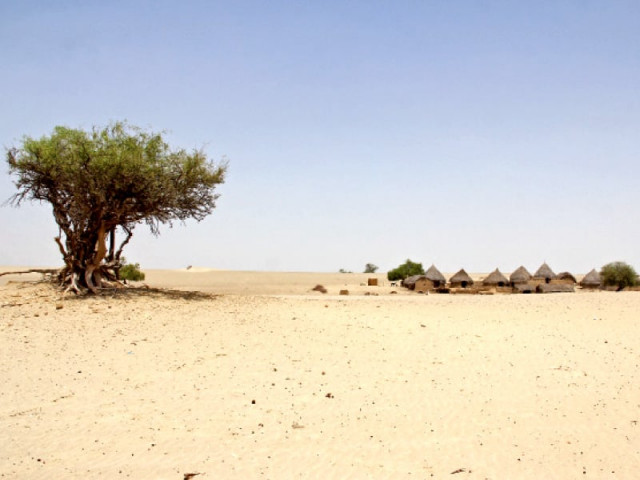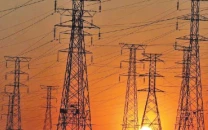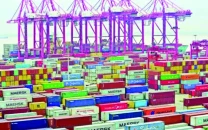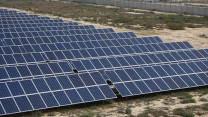Sand economy – an untapped business avenue
Pakistan’s economy may get boost if govt engages with China in turning deserts green

Besides extensive collaboration in energy, infrastructure, industrial and socio-economic areas, Pakistan and China have another business avenue to tap. The lucrative window, still unexplored, belongs to sand economy.
China, which has gained mastery in the field of reclaiming land from deserts through afforestation, has already channelised its own business fortunes by giving robust impetus to sand economy. This ecological industry has not only provided monetary gains but has also helped catalyse jobs, especially for rural areas in China.
Pakistan desperately needs the sand economy, which is also called green economy, which will usher in an era of afforestation and lead to a lucrative business.
Being home to five deserts including Cholistan desert, Thal desert, Indus Valley desert, Thar desert and Kharan desert, Pakistan’s economy may get a boost if the Pakistan Tehreek-e-Insaf (PTI) government engages with China to establish the ecological industry.
In 2014, the PTI, which governed Khyber-Pakhtunkhwa province between 2014 and 2018, entered the global fray and joined the Bonn Challenge, which aimed to restore 150 million hectares of the world’s degraded and deforested land by 2020.
The government pledged to restore 350,000 hectares of forest and degraded land. The project cost was estimated at $99 million. Still, plantation of saplings as part of the country’s 10-billion Tree Tsunami programme is in process.
Pakistan should take inspiration from China’s success story showcased in Kubuqi desert. The initiative kicked off 32 years ago that turned green about 6,000 square kilometres, or one-third, of the desert.
Located about 800 kilometres from western Beijing in the Inner Mongolia autonomous region, game-changing measures have also controlled desertification in the rest of the area. Elion, a private ecology and investment enterprise, has invested approximately 38 billion renminbi ($5.82 billion) in the Kubuqi desert-greening project since 1988, helping to lift more than 102,000 local farmers and herdsmen out of poverty.
Under the company’s guidance and with local government’s support, the local residents benefit from the “environmental wealth” that is generated by the efforts to combat desertification.
For example, the locals grow a drought-tolerant herb, Chinese licorice, which is the most used herb in traditional Chinese medicine. The plant helps enrich desert soil, with the bacteria around roots of the plants generating nitrogen, which forms a biological crust above the sand that begins the fertilisation process of the desert soil. Cistanche, another type of drought-tolerant herb, was introduced after the successful planting of licorice.
If Pakistani economic wizards exploit the scenario, deserts will transform into fertile land to help grow Chinese herbal plants in great number. By exporting them that are in high demand in China, Pakistani may amplify its export base in China.
Elion has invented and applied more than 100 environmental technologies to ensure the plants survive the harsh environment and ensure the ecological restoration is sustainable. The annual precipitation in Kubuqi has increased fourfold, from less than 100 millimetres to more than 400 millimetres over the past 30 years, thanks to 53% plantation coverage, which is a decisive change facilitating ecological sustainability.
Investment proposal
In 2015, Chinese company, the Elion Resources Group (ERG), showed eagerness to cooperate with Pakistan in this field to turn Cholistan desert, Thal desert, Indus Valley desert, Thar desert and Kharan desert into an oasis by putting in place the ecological system, eco-friendly infrastructure and mechanism for technological innovation.
Environmentalist Dr Javed Iqbal said Pakistan should welcome Elion Resources and its investment proposal in deserts of the country. ERG has planted seeds of industrialisation for desertification control, he added.
All five deserts in the country will take advantage of the green economy, which gives birth to natural pharmacy. In terms of anti-sand greening, Elion has been using an “economical” way to plant liquorice that can well grow in the desert as a major plant for anti-sand greening.
Liquorice, as a sand-and-drought medicinal plant, can both prevent sand and serve the medicine industry. It is a natural pharmaceutical group that possesses complete industrial chains, rarely found in China.
By relying on desert resources, Eco-Green Society official Mehreen Bukhari says, Elion invested over 100 billion renminbi (about $17 billion) to develop the desert green energy industry. “Since 2011, the group has introduced the integrative, intensive and clustered development mode of circular economy, striven to develop bio-energy, built up about 2,000 square kilometres of carbon sink forests and took in CO2 alga breeding technology from the US to fully absorb the CO2 emitted from the industrial base,” he added.
The Kubuqi project generated over 5,000 employment opportunities for local peasants and herdsmen, while free professional training has also been provided to make them new-generation ecological construction workers, tourist service staff and skilled workers for intensive breeding and planting. The ecological industry in desert has increased the income of natives by over 300 million renminbi per year. Net per capita income of herdsmen has increased from 2,000 renminbi in the past to 30,000 renminbi at present.
Worst conditions
All five deserts in Pakistan have been confronting the same worst conditions like the Kubuqi desert in China suffered 32 years ago.
The Cholistan desert sprawling over 10,200 square miles is stripped off all the civic facilities with scant water and vegetation. The Indus Valley desert covers an area of 19,501 square kilometres in northwestern Punjab between the Chenab and Indus Rivers. The Indus Valley desert is dry and less hospitable to forest cover. The Kharan desert is a sandy and mountainous desert situated in Balochistan in southwestern Pakistan. This desert was the site of Pakistan’s second nuclear test, Chagai-II, which was carried out on May 30, 1998.
The Thal desert is spread between the Jhelum and Sindh Rivers near the Potohar Plateau, covering Bhakkar, Khushab, Mianwali, Layyah, Muzaffargarh as well as Jhang.
Thar desert spans an area of 175,000 square kilometres. It is the seventh largest desert on the planet and the third largest in Asia.
Agriculturist Dr Humayun Faisal says Pakistan governments, in the past, launched some projects to increase prospects of irrigation and cultivation in the Thal desert by unveiling the Greater Thal Canal project (phase-I and II) costing Rs30 billion in 2001 but unfortunately the project stands incomplete so far.
Under the current fiscal year budget, the Punjab Provincial Development Working Party has allocated Rs6,261.7 million for the Greater Thal Canal project phase-II (Chaubara branch). If Chinese company ERG and quarters concerned in Pakistan agree on desert projects, including the Greater Thal Canal and others, they will bring revolutionary changes in the region and uplift lives of local people, who are forced to lead nomadic or semi-nomadic lives with meagre livelihood, educational, healthcare and other civic facilities, he hopes.
Like other parts of the world, Pakistan is also suffering desertification that is damaging its agricultural cover. Mounds of sand in the desert belt of Balochistan often keep flying and landing on fruit orchards, particularly in the Quetta valley.
Due to depleting forests, sand dunes deposit on the canopy of orchards which, in turn, leads to the resurgence of mitepest on orchards, requiring several sprays of miticides for its control and creating unnecessary burden on the economy of the fruit orchard owners.
Desertification is one of the most threatening environmental issues, directly affecting people’s survival and development. So far, 65% of the world land has been facing desertification in varying degrees and desertification is expanding at an annual rate of 50,000-70,000 square kilometres, which forces millions of people into poverty and starvation.
The article originally appeared on the China Economic Net
Published in The Express Tribune, July 27th, 2020.
Like Business on Facebook, follow @TribuneBiz on Twitter to stay informed and join in the conversation.



















COMMENTS
Comments are moderated and generally will be posted if they are on-topic and not abusive.
For more information, please see our Comments FAQ